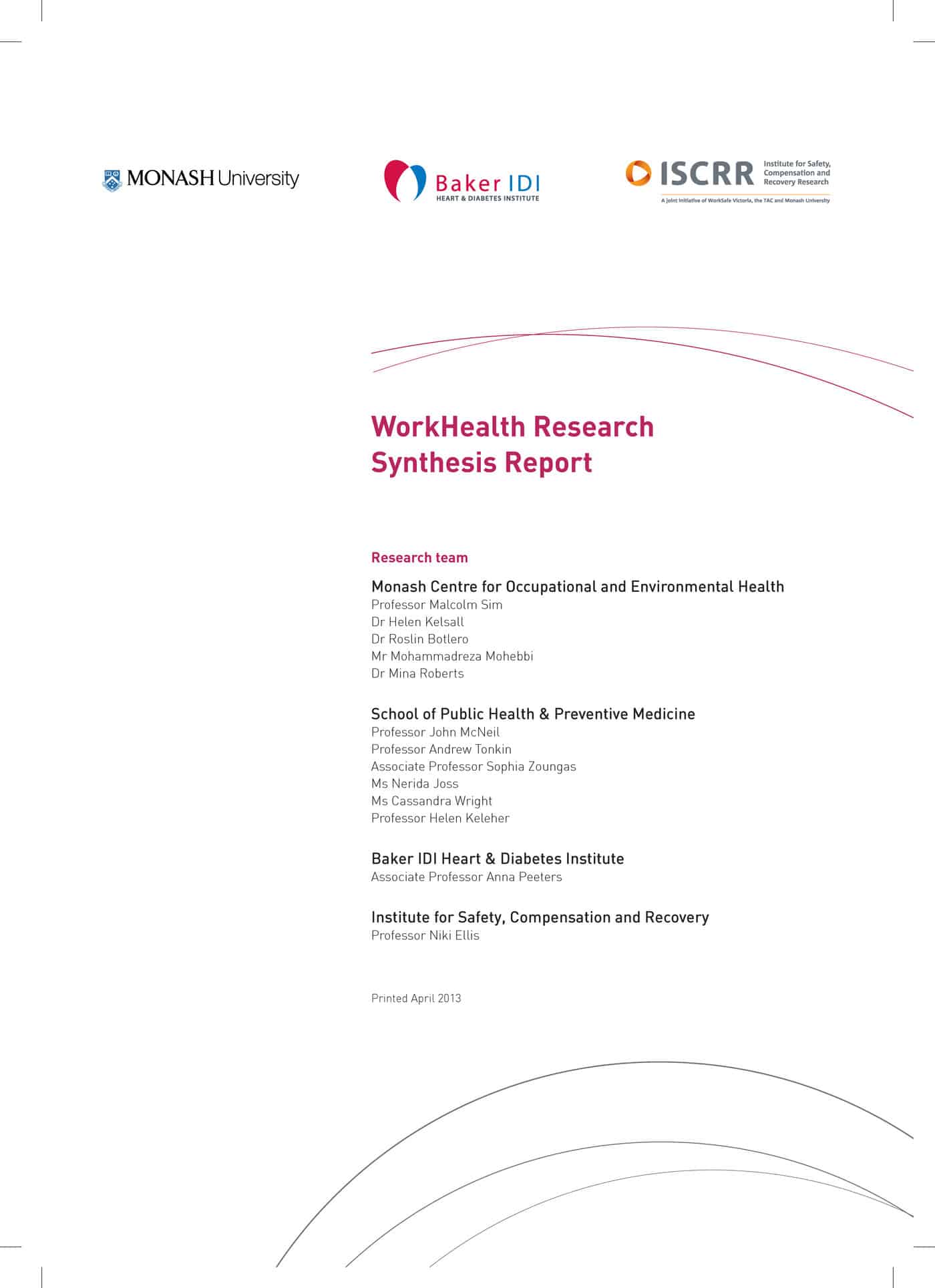Last week the Institute for Safety, Compensation and Recovery Research (ISCRR) released a review of the WorkHealth program. The results are very positive and deserve detailed analysis. However these analyses do not seem to address all the expectations of the Victorian Government when the program was launched several years ago.
 Premier John Brumby said at the launch of WorkHealth that
Premier John Brumby said at the launch of WorkHealth that
“Over time the program is expected to free up $60 million per year in health costs, as well as:
- Cut the proportion of workers at risk of developing chronic disease by 10 per cent;
- Cut workplace injuries and disease by 5 per cent, putting downward pressure on premiums;
- Cut absenteeism by 10 per cent; and
- Boost productivity by $44 million a year.”
One of the key findings of the research seems to meet two of the program’s aims:
“Modelling of outcome forecast goals for a 10% reduction in absenteeism and a 5% reduction in compensable injury rates are likely to be met, especially as health promotion program uptake increases.” (page 5)
It is reasonable to expect from a 4-5 year study of hundreds of thousands of work health checks that hard data be obtained but as the quote above reveals, the researchers needed to apply modelling and draw on research from other sources. This is how the report explains it:
“Given the short-to-medium term nature of this research and evaluation program, not all necessary data to evaluate these productivity aims were collected. Privacy considerations were a main barrier to collecting relevant data for a longitudinal research study. Therefore, it was decided to undertake some modelling, using some of the collected research data relating to participation in the WorkHealth programs and other findings available in the published literature relating to impacts of similar health and wellbeing programs on workplace factors which can impact on productivity.” (page 10)
It appears that the findings are not only based on the WorkHealth database but on other data in the published literature. There is no suggestion that this analysis is improper but it does undermine the quick summaries of the WorkHealth program that are used in media releases and YouTube videos. The YouTube video at least acknowledges that absenteeism and other potential benefits have been “forecast” and not proven.
There is little doubt that the WorkHealth program has raised the awareness of health issues in the Victorian workplaces but the report acknowledges that this awareness has not always been turned into action. And yet only action will achieve the aims identified at the program’s launch.
Some question the independence of ISCRR undertaking an analysis of a program established by one of its major sponsors, WorkSafe Victoria, but I do not share that view. However, additional research is required into the economic impacts of this scheme given that dollar figures were quoted as potential benefits of the WorkHealth program.
I have been unable to find any mention in the various reports related to a reduction of annual health costs by $A60 million or a direct boost in productivity “by $44 million a year”. But what is meant by productivity in the reports or even in the then-Premier’s original statements has not been defined. Reduced absenteeism is likely to increase the labour pool in workplaces but productivity involves much more than workers turning up for work.
What was missing from the WorkHealth program was assessments of mental health. This was never part of the original brief but could have had more relevance to issues of productivity than an analysis of chronic health risks.
The WorkHealth program, in its current configuration, will run to the end of 2013. It has proved its worth as a health promotion tool but whether it should be extended, particularly under the funding model from WorkSafe Victoria, is debatable. The analysis reports imply that WorkHealth would be a better fit under the health promotion activities of the Department of Health, perhaps thorough an expansion of its Better Health Channel.
The original champion of the WorkHealth program on the Victorian WorkCover Authority board, Elana Rubin, has moved on and Victorian employers could ask how WorkHealth has generated a return on the investment provided by them through their workers compensation premiums. With increasing calls from business groups for increased productivity, an independent economic analysis of the WorkHealth program could be of long term significance.
The reports undertaken by ISCRR are a major source of information from which the government will be deciding WorkHealth’s future. I would suggest that the program continue but under the Department of Health and through a different funding model. This would allow WorkSafe to establish a similar outreach program of workplace mental health, a hazard that is gaining increasing attention for its significance as well as its personal, economic and organisational impact.

One thought on “WorkHealth raises health awareness but only so far”